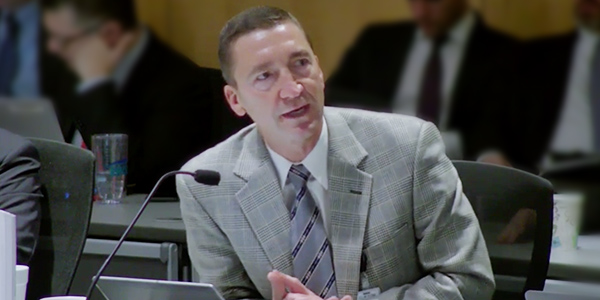ERCOT’s Board of Directors on Tuesday unanimously approved the grid operator’s first economic project in three years, a $53.3 million transmission upgrade in West Texas, despite concerns it doesn’t address reliability issues.
Staff recommended Wind Energy Transmission Texas’ (WETT) Bearkat area project as the “most cost-effective solution” to address congestion near Odessa. The region’s wind generation has been bottled up by a lack of adequate transmission, resulting in congestion more than half the time, staff said.
Director Clifton Karnei, who represents the cooperative market segment, referenced the state’s Competitive Renewable Energy Zones (CREZ) initiative in expressing his unease about the board making “mini-CREZ” decisions. CREZ resulted in the construction of 2,800 miles of new transmission facilities, delivering West Texas wind energy to the state’s urban centers at a cost of $7 billion.
“We built all the CREZ lines that raised transmission costs. People are concerned about transmission costs being high, yet here, we’re adding another transmission project that’s not needed for reliability,” Karnei said. “We’re doing it because we have all this wind in a constrained area that is being derated. So when we run the production cost model, that’s when it shows the net societal impact. It makes me feel very uncomfortable.”
ERCOT’s analysis found the Bearkat project would produce $400 million in 30-year net savings, based on its economic planning criteria. Staff evaluated nine upgrade alternatives, all of which passed the criteria.
Asked whether the area would require a reliability project in 10 years should the board reject staff’s recommendation, Fred Huang, ERCOT manager of regional planning, said it’s difficult to project future load reliability without doing a study.
“Without this project, we expect to continue to see congestion in this area,” he said. The Bearkat area has 1.5 GW of wind energy already in operation or planned.
Unaffiliated Director Peter Cramton pointed out that building transmission for only reliability reasons would forego potential economic gain.
“It seems like this makes sense for reliability and social economic benefits to be included as a reason to do transmission projects. There aren’t going to be the private incentives for somebody to build this,” he said. “In a first best world, the private incentives would be aligned with the social incentives, and we would just let the market work, but it seems transmission is an area where we can’t completely rely on the market.”
Karnei was able to find comfort in ERCOT’s Protocols and their reliability and economic criteria.
“If we are to follow Protocols, it appears to me we need to endorse this project,” he said.
“This analysis supports the consistent regulatory framework we have in place,” ERCOT Legal Counsel Chad Seely said, reinforcing Karnei’s statement.
ERCOT updated its economic planning criteria in 2012, following the Texas Public Utility Commission’s removal of a consumer benefit test from its economic criteria for certificates of convenience and necessity.
The Bearkat project comprises two new 345-kV bays and a 27-mile, 345-kV single-circuit line on double-circuit-capable structures. ERCOT’s Technical Advisory Committee endorsed the project last month. (See “TAC Endorses $53.3M Economic Project in West Texas,” ERCOT Technical Advisory Briefs: Sept. 27, 2018.)







